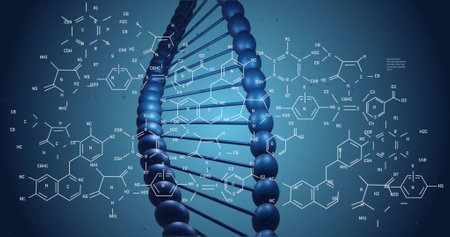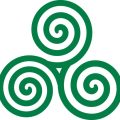1. Introduction: Understanding Palm Features and Public Beliefs
Across the UK, palmistry—often referred to as chiromancy or simply ‘reading palms’—remains a topic of both fascination and scepticism. Stemming from centuries-old traditions, many Britons associate the lines and shapes found on their palms with everything from luck and love to career prospects. Superstitions surrounding palm features are woven into local folklore, with stories passed down through generations at family gatherings or in village pubs. At the same time, there is a widespread belief that genetics play a significant role in determining the characteristics of our palms, such as the length of fingers, the depth of lines, and even particular creases that some consider auspicious or ominous. This intersection between scientific explanation and cultural tradition raises important questions: Are our palm features truly written in our DNA, or do longstanding myths shape our understanding more than we realise? In this article, we will dissect these assumptions by separating established facts from popular fiction, focusing on how British culture interprets the origins of palm features.
2. The Science of Palm Features: What Are They?
To distinguish myth from reality regarding genetics and palm features, it is essential to clarify what these features actually entail. In both popular culture and scientific discourse within the UK, the palm is commonly analysed by considering three main elements: major lines, mounts, and skin patterns. Each has distinct anatomical bases and potential genetic influences.
Major Lines
The most widely recognised palm features are the major lines – typically known as the Heart Line, Head Line, and Life Line. These lines are essentially creases in the palmar skin formed during foetal development. In anatomical terms, they are referred to as flexion creases, which accommodate hand movement and grip.
| Line Name | Anatomical Term | Common Location | Typical Function |
|---|---|---|---|
| Heart Line | Distal Transverse Crease | Upper palm, beneath fingers | Facilitates finger flexion |
| Head Line | Proximal Transverse Crease | Across centre of palm | Aids thumb opposition and grip |
| Life Line | Thenar Crease | Curves around base of thumb | Supports thumb movement |
Mounts of the Palm
Mounts are raised pads of flesh found at the base of each finger and thumb. From an anatomical perspective, these correspond to underlying muscle pads (thenar, hypothenar, and digital pads). Their prominence can be influenced by genetic factors such as muscle mass distribution and connective tissue density.
| Mount Name (Traditional) | Anatomical Correspondence | Location on Palm |
|---|---|---|
| Mount of Venus | Thenar Eminence (muscle pad) | Base of thumb |
| Mount of Luna (Moon) | Hypothenar Eminence (muscle pad) | Base of little finger/palm edge |
| Mounts under Fingers (Jupiter, Saturn, Apollo, Mercury) | Digital Pads (fatty tissue over metacarpals) | Beneath each finger tip/knuckle area |
Palm Patterns and Dermatoglyphics
The skin patterns on our palms—particularly ridges known as dermatoglyphics—are determined during embryonic development. These patterns include loops, whorls, and arches, which are used in forensic science for identification. Unlike major lines and mounts, dermatoglyphic patterns are more directly tied to genetic coding and are widely studied in medical genetics for links with certain congenital conditions.
The Role of Genetics in Palm Features Formation
The formation of palm lines and mounts is a multifactorial process involving both genetic programming and mechanical forces in the womb. While certain traits—such as the patterning of dermatoglyphics—have a clear genetic component, others like the depth or length of specific lines may also be influenced by repetitive movements or environmental factors during early development.

3. Genetics Explained: How Genes Influence Bodily Traits
To understand the relationship between genetics and palm features, it is essential to start with the fundamentals of genetics itself. Genes, which are segments of DNA inherited from our parents, play a pivotal role in shaping a wide array of physical characteristics. These traits can range from obvious elements such as eye colour, hair texture, and height to more subtle attributes like the shape of our earlobes or the length of our fingers. In terms of hands specifically, genetics largely determines the structure of bones, the length and width of fingers, as well as certain patterns on the palms such as major creases and fingerprint whorls. However, it is important to clarify what genes cannot do. While they set the basic blueprint for hand anatomy and development, genes do not dictate every minute detail seen in individual palm lines or temporary markings caused by environmental factors or daily activities. Moreover, genetic influence operates within a broader biological context—environmental elements, lifestyle choices, and random developmental variations also have a substantial impact on how our hands ultimately appear. Therefore, when considering claims that palm features reveal deep personal or familial insights solely based on inheritance, it is crucial to separate scientifically established genetic effects from cultural myths or speculative interpretations.
4. Separating Scientific Fact from Folklore
In Britain, palm reading—or chiromancy—has long captured the public’s imagination, often weaving together threads of folklore, tradition, and pseudo-scientific claims. However, a critical examination reveals a substantial divide between what science confirms about genetic inheritance and the beliefs perpetuated by popular culture regarding palm features.
The British Context: Folklore Meets Modern Science
Historically, British folklore has attached significant meaning to the shape and lines on one’s palms, associating them with personality traits, destiny, or even future events. In contrast, modern genetic research restricts its focus to heritable physical characteristics—such as the basic structure of the hand—rather than the intricate patterns of lines that palmists interpret.
Key Differences: Genetics vs. Palmistry Claims
| Aspect | Scientific View (Genetics) | Folklore/Palmistry View |
|---|---|---|
| Inheritance | Certain hand shapes and finger lengths may have genetic components | Palm lines and mounts are inherited and reveal character/fate |
| Evidence Base | Supported by peer-reviewed studies on genetics and morphology | Rooted in anecdote and tradition; lacks empirical validation |
| Interpretation of Palm Lines | No scientific basis for predicting personality or fate from palm lines | Palm lines directly linked to life events and personal qualities |
| Cultural Perception in Britain | Generally viewed with scepticism by scientific community | Remains popular in fairs, markets, and some social circles |
Bridging the Gap: Public Understanding in Britain
The persistence of palmistry in British culture highlights a broader challenge: bridging the gap between accessible science communication and entrenched cultural beliefs. While genetics can explain why certain hand features may run in families, it does not support the notion that palm lines can predict one’s destiny or personality. The continued popularity of palm reading points to a collective fascination with self-discovery and mystery, despite clear distinctions drawn by scientific evidence.
5. The Limits of Genetic Influence on Palmistry Claims
One of the most persistent myths in palmistry is the belief that genetic factors not only shape the physical features of our palms, but also predetermine our personalities, destinies, or fortunes. While it is scientifically accepted that genetics influence certain aspects of our hand structure—such as finger length and palm size—there is no robust evidence to support the claim that these physical traits reliably predict individual psychological characteristics or life outcomes.
Genetics and Physical Features: What Science Says
Research conducted by UK-based institutions, including studies published by the University of Cambridge and referenced by the NHS, confirms that genetic inheritance does play a role in determining aspects like finger length ratios and skin patterns. However, these genetic markers are linked primarily to biological development rather than complex attributes like personality or fate. The Human Genome Project further clarifies that while genes shape many physical characteristics, they do not encode for specific behavioural traits or life events.
Palm Lines and Personality: No Proven Connection
Popular palmistry often claims that lines such as the heart line or head line can reveal emotional disposition or intelligence. However, systematic reviews of peer-reviewed UK scientific literature find no causal relationship between palm features and psychological profiles. Leading British psychologists highlight that personality is shaped by a complex interplay of environment, upbringing, education, and social factors—not merely by inherited physical characteristics.
Debunking Myths with Evidence
The British Psychological Society has repeatedly stated that there is no credible scientific basis for using hand features to predict personality or fate. Furthermore, the Royal Society’s position on pseudoscience underscores that genetic determinism in palmistry fails rigorous scientific scrutiny. In short, while genetics shape our hands’ appearance to some extent, any link to personal destiny remains firmly within the realm of fiction rather than fact.
6. Conclusion: Fostering Critical Thinking in the UK Context
As we draw together the threads of fact and fiction surrounding palm features and genetics, it becomes essential to encourage a culture of informed and rational thinking, particularly within the UK’s diverse and scientifically literate society. While traditional beliefs such as palmistry are woven into cultural history and can serve as fascinating talking points or social traditions, it is important for British audiences to distinguish between folklore and evidence-based science.
Embracing Scientific Literacy
The ability to critically evaluate claims about genetics and physical traits empowers individuals to make informed decisions. Recognising that the appearance of our palms—lines, shapes, and patterns—is primarily determined by genetic factors, not by mystical influences, helps dispel common misconceptions. This scientific perspective aligns with the UK’s strong educational emphasis on biology and genetics, fostering a community that values evidence over anecdote.
Balancing Tradition with Rationality
Respecting cultural practices does not necessitate accepting them uncritically. Palmistry may still have a place at village fêtes or as an entertaining feature at British gatherings, but it should be viewed through a lens of healthy scepticism. By promoting open conversations about the origins of these beliefs and their lack of scientific foundation, we equip ourselves—and future generations—to appreciate tradition without conflating it with factual knowledge.
Encouraging Open-Mindedness
Critical thinking does not mean dismissing all non-scientific traditions outright; instead, it involves questioning, researching, and understanding the basis for different claims. In the context of palm features and genetics, this means recognising the boundaries between what is proven by science and what remains in the realm of myth.
A Call to Action for UK Readers
In summary, separating fact from fiction regarding palm features is not only a matter of scientific accuracy but also one of cultural maturity. As members of a society that values both heritage and progress, British readers are encouraged to approach such topics with curiosity, discernment, and an appreciation for both tradition and truth. Let us champion critical thinking in our communities, ensuring that our understanding of genetics—and its relationship to physical traits—remains grounded in evidence while respecting the rich tapestry of our collective folklore.


